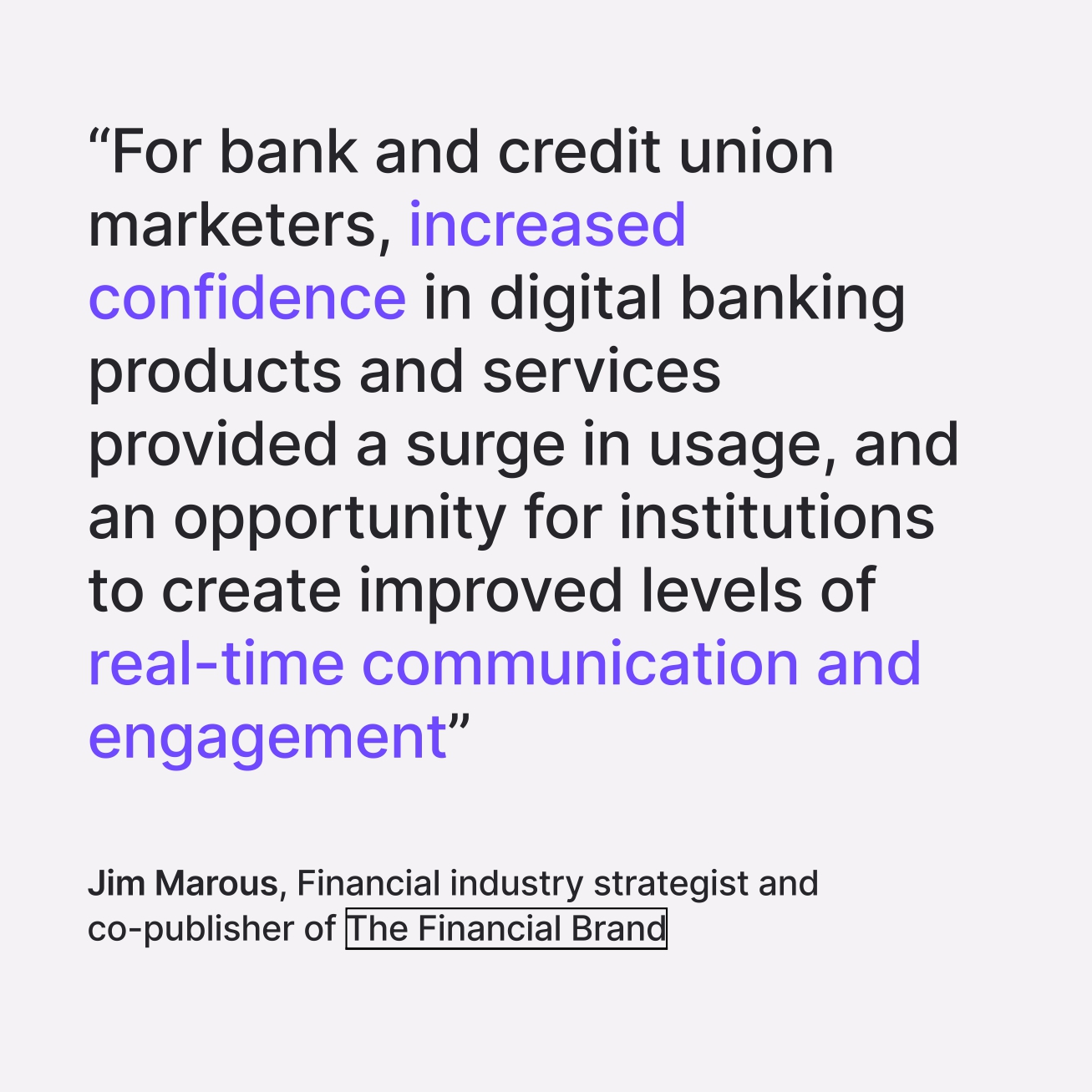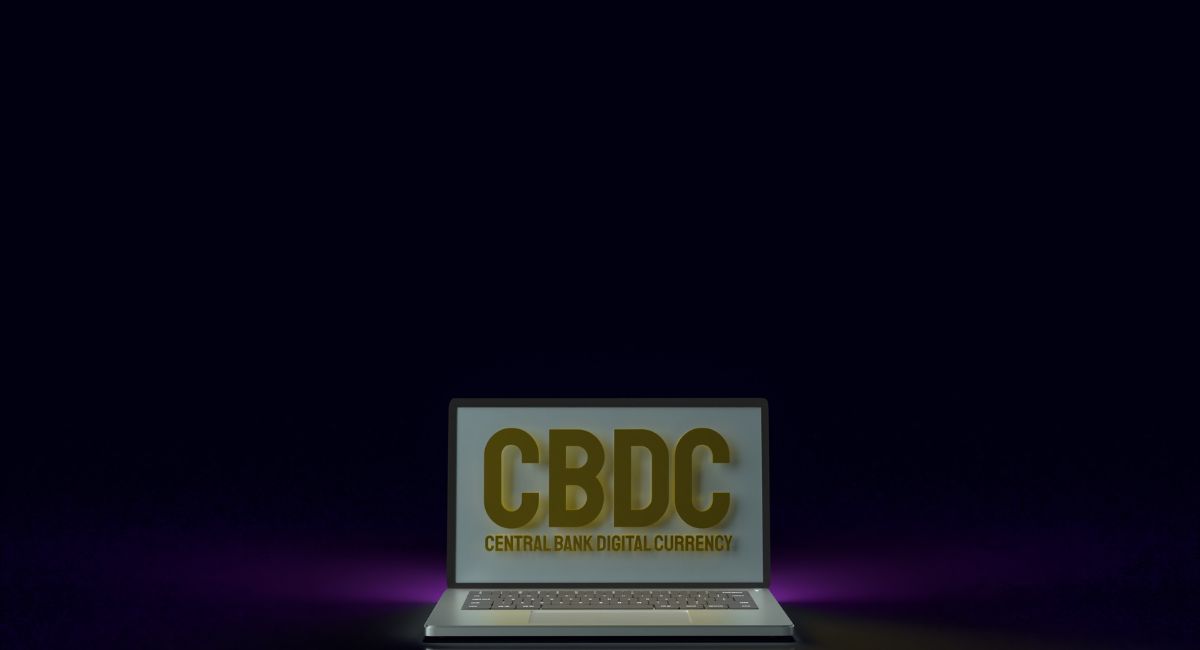The Rise Of Digital Banking: Top 10 Digital Banking Services That Changed The World
Digital banking refers to the provision of financial services and transactions through digital channels, such as mobile applications, websites, and other online platforms. It has gained significant traction in recent years, revolutionizing the way people manage their finances. Digital banking offers a convenient and accessible alternative to traditional banking, empowering consumers and businesses with greater control over their financial activities.
The rise of digital banking can be attributed to several factors. Firstly, advancements in technology have transformed the financial sector, enabling banks to provide services through digital platforms. The proliferation of smartphones and the internet has made it easier for individuals to access banking services from anywhere at any time, eliminating the need for physical visits to brick-and-mortar branches.
Secondly, changing customer expectations and preferences have played a significant role in the popularity of digital banking. People now expect instant access to their accounts, real-time transactions, and personalized experiences. Digital banking fulfills these expectations by offering quick and seamless transactions, easy balance checking, and customized notifications.
Furthermore, the COVID-19 pandemic accelerated the adoption of digital banking as social distancing measures made physical banking less feasible. Many individuals who previously relied on traditional banking methods turned to digital alternatives to fulfill their financial needs. This shift in behavior further highlighted the convenience and safety of digital banking.
How Digital banking differs from traditional banking
Digital banking differs from traditional banking in several ways. Firstly, digital banking eliminates the need for physical interaction with bank employees or tellers. Instead, customers can perform various banking activities through self-service options, such as online transfers, bill payments, and account management. This reduces the need for lengthy paperwork and long wait times often associated with traditional banking.
Secondly, digital banking provides 24/7 accessibility, allowing customers to conduct transactions and access account information at their convenience. Traditional banks typically operate within limited working hours, and customers may face delays due to holidays or weekends. Digital banking offers round-the-clock availability, providing customers with flexibility and the ability to manage their finances at any time.
Another significant difference is the speed of transactions. Digital banking enables real-time payments and transfers, allowing for instant fund transfers between accounts. This is in contrast to traditional banking, where funds may take several days to clear and reach the intended recipient. The speed of digital transactions facilitates faster business operations and provides consumers with greater control over their money.
Security is another aspect where digital banking has made significant advancements. While concerns about online security remain, banks have implemented robust encryption protocols, multi-factor authentication, and other security measures to protect customer data and transactions. Additionally, digital banking platforms often provide real-time alerts for suspicious activities, enhancing security and fraud detection compared to traditional banking methods.
Also, read – AI In Banking Systems: The Next Revolution Or Upcoming Challenge
The benefits of digital banking for consumers and businesses
The benefits of digital banking for consumers and businesses are manifold. For consumers, digital banking offers convenience and time-saving benefits. They can perform banking activities from the comfort of their homes, avoiding the need to visit physical branches. Digital banking applications also provide comprehensive financial management tools, allowing customers to track spending, set budgets, and receive personalized financial insights. Additionally, digital banking offers competitive interest rates and reduced fees compared to traditional banking.
For businesses, digital banking streamlines financial processes and improves efficiency. Online invoicing, digital payment acceptance, and real-time transaction tracking enable faster cash flows and simplified accounting. Digital banking platforms often integrate with accounting software, further automating financial operations. Businesses can also access business loans, lines of credit, and other financial products through digital platforms, facilitating growth and expansion.
So much to learn and so little progress in financial services. Lots of talk with only minimal movement despite the importance of data, AI and Machine Learning to the future of digital banking engagement and the potential for operational excellence. Thanks @DeepLearn007.
— Jim Marous 💯 (@JimMarous) November 7, 2022
Types of digital banking services
Digital banking services have revolutionized the way individuals and businesses manage their finances. With the advancements in technology and the widespread use of the internet, various types of digital banking services have emerged to cater to the diverse needs of consumers and businesses. Here are some of the key types of digital banking services available today:
1. Online Banking: Online banking allows customers to access their bank accounts and perform various financial transactions through a bank’s website or mobile application. Users can check their account balances, view transaction history, transfer funds between accounts, pay bills, set up automatic payments, and manage their personal finances conveniently from their computer or mobile device.
2. Mobile Banking: Mobile banking services are specifically designed for smartphones and tablets, enabling users to perform banking transactions on the go. Mobile banking apps offer features similar to online banking, such as balance inquiries, fund transfers, bill payments, and mobile deposits. Additionally, mobile banking often incorporates advanced security features such as biometric authentication (fingerprint or facial recognition) for enhanced user protection.
3. Digital Wallets: Digital wallets, also known as e-wallets or mobile wallets, provide a secure and convenient way to make payments digitally. Users can link their bank accounts, credit cards, or debit cards to a digital wallet app, which can be accessed via a smartphone or other devices. Digital wallets offer features like contactless payments, peer-to-peer transfers, online purchases, and the ability to store loyalty cards and coupons. Popular digital wallet providers include Apple Pay, Google Pay, Samsung Pay, and PayPal.
4. Peer-to-Peer (P2P) Payments: P2P payment services allow individuals to send and receive money directly to and from each other using digital platforms. These services eliminate the need for physical cash or checks and provide a quick and convenient way to split bills, pay friends or family, or make payments to small businesses. Examples of popular P2P payment services include Venmo, Zelle, and Cash App.
5. Online Lending: Online lending platforms have emerged as an alternative to traditional banks for individuals and businesses seeking loans. These platforms connect borrowers directly with lenders, offering a streamlined and efficient loan application process. Online lending services typically provide various types of loans, such as personal loans, business loans, student loans, and mortgages, often with competitive interest rates and flexible repayment terms.
6. Digital Investment Services: Digital investment services, also known as robo-advisors, provide automated and algorithm-based investment advice and portfolio management. These platforms use customer-provided information, such as investment goals, risk tolerance, and time horizon, to offer personalized investment strategies. Digital investment services often have lower fees compared to traditional financial advisors, making investing more accessible to a wider range of individuals.
7. Open Banking: Open banking refers to the practice of sharing financial data securely between banks and authorized third-party providers. It allows customers to access their account information and initiate transactions through third-party applications. Open banking fosters innovation and competition by enabling new financial services and products to be developed, such as account aggregation, budgeting apps, and personalized financial management tools.
8. Cryptocurrency Services: With the rise of cryptocurrencies like Bitcoin and Ethereum, digital banking services have extended to include cryptocurrency exchanges and wallets. These services allow users to buy, sell, store, and transfer cryptocurrencies securely. Some banks and fintech companies have started offering integrated cryptocurrency services alongside traditional banking services, providing customers with a more comprehensive digital financial experience.
Overall, the evolution of digital banking services has empowered consumers and businesses by providing them with convenient access to a wide range of financial services, streamlining processes, and enhancing financial management capabilities. The availability and adoption of these services may vary across regions and financial institutions, but the digital transformation of banking continues to shape the future of finance.
Challenges that digital banking startups face
While digital banking startups have witnessed significant success and disrupted the traditional banking sector, they also face various challenges that can impact their growth and sustainability. Here are some key challenges faced by digital banking startups:
1. Regulatory Compliance: Digital banking startups must navigate complex regulatory frameworks, including financial regulations, data protection laws, anti-money laundering (AML) regulations, and Know Your Customer (KYC) requirements. Compliance with these regulations is essential to ensure the security of customer data, prevent financial crimes, and maintain trust. However, the compliance process can be time-consuming and costly, particularly for startups with limited resources.
2. Security and Fraud: Cybersecurity threats and the risk of fraud are major concerns for digital banking startups. As technology evolves, so do the methods employed by hackers and fraudsters. Startups must invest in robust security measures, including encryption, secure authentication protocols, and regular security audits, to protect customer data and transactions. Building customer trust is crucial, and any security breaches or fraudulent activities can severely damage a startup’s reputation.
3. Customer Acquisition and Retention: Acquiring and retaining customers is a significant challenge for digital banking startups, especially in a highly competitive market. Traditional banks have long-established customer bases, making it difficult for startups to attract customers away from well-known brands. Startups must differentiate themselves through unique value propositions, such as better user experience, innovative features, or personalized services. Building brand awareness, establishing trust, and providing excellent customer support are crucial for customer acquisition and retention.
4. Scalability and Infrastructure: As digital banking startups grow and attract more customers, they face scalability challenges. Scaling their infrastructure to handle increasing user volumes, transactions, and data can be complex and resource-intensive. Startups need to ensure that their systems, servers, and networks can handle the demands of a growing customer base while maintaining system performance and availability.
5. Funding and Financial Sustainability: Securing sufficient funding is a critical challenge for digital banking startups, particularly during the early stages. Startups require significant investment to develop and launch their platforms, build infrastructure, comply with regulations, and attract customers. Investors may be hesitant to invest in relatively new and unproven models. Moreover, startups must achieve financial sustainability by generating revenue through various sources, such as transaction fees, premium features, partnerships, or cross-selling financial products.
6. Trust and Perception: Overcoming customer skepticism and building trust in digital banking services can be challenging. Some customers may be hesitant to adopt digital banking due to concerns about security, privacy, or unfamiliarity with new technology. Startups need to invest in transparent communication, educating customers about the benefits of digital banking, and assuring them about the security measures in place.
7. Legacy Systems and Integration: Integrating with legacy banking systems and infrastructure can be a significant hurdle for digital banking startups. Traditional banks often rely on outdated core banking systems that may not be easily compatible with newer technology platforms. Startups must navigate complex integration processes, ensuring seamless data exchange and functionality while working with existing infrastructure.
8. Changing Customer Expectations: Customer expectations in the digital banking landscape are continually evolving. Startups must keep pace with customer demands for innovative features, personalized experiences, real-time insights, and intuitive interfaces. Failing to meet these evolving expectations can result in customer attrition and losing competitive advantage.
Future of Digital banking
The future of digital banking holds significant promise and is expected to have a transformative impact on the financial industry. Rapid advancements in technology, changing consumer preferences, and the increasing digitization of financial services are driving the evolution of digital banking. Here, we will delve into the key trends and potential impacts of digital banking on the financial industry.
1. Enhanced Customer Experience: Digital banking is set to revolutionize the way customers interact with financial institutions. Traditional brick-and-mortar branches will become less relevant as customers increasingly rely on digital channels for their banking needs. Mobile banking apps, personalized dashboards, and virtual assistants will provide seamless and intuitive user experiences, enabling customers to perform a wide range of banking activities conveniently from their smartphones or other devices. Chatbots and AI-powered tools will offer personalized financial advice, budgeting assistance, and round-the-clock customer support.
2. Accessible Banking: Digital banking has the potential to democratize financial services by providing greater access to underserved populations. Mobile banking apps and internet banking will empower people in remote areas or with limited mobility to manage their finances conveniently. Furthermore, the unbanked and underbanked populations, who previously lacked access to traditional banking services, will be able to utilize basic banking functions, such as opening accounts, making payments, and accessing credit, through digital platforms.
3. Financial Inclusion: Digital banking can play a crucial role in advancing financial inclusion. By leveraging mobile and internet technology, financial institutions can reach individuals who were previously excluded from the formal banking sector. This can help alleviate poverty, stimulate economic growth, and reduce income inequality. In addition, alternative credit scoring models that leverage non-traditional data sources, such as social media activity or transaction history, can enable better assessment of creditworthiness, allowing underserved populations to access affordable credit.
4. Disruption of Traditional Banking: The rise of digital banking is disrupting traditional banking models. Established banks are facing competition from fintech startups, neo-banks, and tech giants entering the financial services space. These digital-native players have lower overhead costs, greater agility, and the ability to offer innovative, customer-centric solutions. Traditional banks will need to adapt by embracing digital transformation, streamlining operations, and enhancing their online offerings to stay competitive.
5. Data Analytics and Personalization: Digital banking generates vast amounts of data that can be leveraged to gain valuable insights into customer behavior and preferences. Banks can use advanced analytics and machine learning algorithms to understand customer needs, detect patterns, and offer personalized financial products and services. By leveraging these insights, banks can improve customer engagement, cross-selling, and upselling, ultimately driving customer satisfaction and loyalty.
6. Robust Security and Privacy: As digital banking expands, ensuring robust security and privacy will be paramount. Financial institutions will need to employ sophisticated cybersecurity measures to protect customer data and transactions from evolving cyber threats. This includes multifactor authentication, biometric verification, and encryption technologies. Moreover, regulators will play a vital role in setting stringent data protection and privacy regulations to safeguard consumer rights and maintain trust in the digital banking ecosystem.
7. Collaboration and Open Banking: The future of digital banking will likely involve greater collaboration between banks, fintech companies, and other players in the financial ecosystem. Open banking initiatives, which promote data sharing through secure APIs (Application Programming Interfaces), enable customers to access a broader range of financial services from multiple providers. This collaboration fosters innovation, enhances competition, and leads to the development of innovative products and services that cater to specific customer needs.
Risks of Digital Banking
While digital banking offers numerous benefits, it is important to be aware of the potential risks involved. Here are some key risks associated with digital banking:
1. Cybersecurity Threats: One of the primary risks in digital banking is the threat of cyberattacks. Hackers and cybercriminals constantly seek to exploit vulnerabilities in digital systems to gain unauthorized access to customer accounts, steal sensitive data, or initiate fraudulent transactions. Phishing attacks, malware, identity theft, and account takeovers are some of the common cybersecurity threats faced by digital banking customers. Financial institutions must implement robust security measures, such as encryption, firewalls, secure authentication protocols, and regular security updates, to protect customer data and transactions.
2. Data Breaches: Digital banking involves the collection and storage of vast amounts of customer data. A data breach, where unauthorized individuals gain access to this data, can have severe consequences. Customer personal information, including names, addresses, social security numbers, and banking details, can be compromised. Such breaches can result in identity theft, financial fraud, reputational damage to the financial institution, and financial losses for customers. Robust data protection measures, including encryption, access controls, and regular security audits, are essential to mitigate the risk of data breaches.
3. Technology Malfunctions: Digital banking relies heavily on technology infrastructure, including servers, databases, networks, and software systems. Any malfunction or disruption in these systems can lead to service interruptions, delays in processing transactions, or loss of customer data. Technical glitches, system failures, or even natural disasters can impact the availability and reliability of digital banking services. Financial institutions must have comprehensive disaster recovery plans, backup systems, and redundancy measures in place to minimize the impact of technology malfunctions.
4. Lack of Personal Interaction: While digital banking offers convenience, it may lack the personal touch and human interaction that customers value. Some customers may prefer face-to-face interactions with bank staff to address complex financial matters or seek personalized advice. In digital banking, there is a potential risk of miscommunication or misunderstandings, as customers rely on self-service channels and may not have immediate access to human assistance. Financial institutions must provide robust customer support channels, including live chat, email, or phone support, to address customer concerns and provide guidance when needed.
5. Regulatory and Compliance Risks: Digital banking operates within a complex regulatory landscape. Financial institutions must comply with various laws and regulations related to data protection, privacy, anti-money laundering (AML), know-your-customer (KYC), and consumer protection. Failure to comply with these regulations can result in legal penalties, reputational damage, and loss of customer trust. Financial institutions must ensure that their digital banking operations are fully compliant with relevant laws and regulations, and they should regularly review and update their compliance policies and procedures.
6. Social Engineering Attacks: Social engineering attacks are a significant risk in digital banking. This involves manipulating individuals to disclose sensitive information or perform actions that compromise their security. Common social engineering techniques include phishing emails, phone calls impersonating bank representatives, or fake websites designed to collect login credentials. Education and awareness programs for customers are crucial to help them identify and avoid falling victim to such attacks.
7. Dependency on Technology: Digital banking is heavily reliant on technology infrastructure, including internet connectivity, mobile devices, and software systems. Any disruption in these technologies, such as network outages, power failures, or software glitches, can impact the availability of digital banking services. Customers may face difficulties accessing their accounts or performing transactions during such disruptions. Financial institutions must have robust backup systems, contingency plans, and alternative channels to ensure uninterrupted access to banking services.
To mitigate these risks, financial institutions and customers must collaborate to implement robust security practices. Customers should maintain strong passwords, regularly update their devices and applications, be cautious of sharing sensitive information, and promptly report any
Top 10 digital banking services that changed the world
- Online banking. Online banking allows customers to access their bank accounts and perform transactions from anywhere with an internet connection. This has made banking more convenient and accessible for customers, and it has also helped banks to reduce costs.
- Mobile banking. Mobile banking is a type of online banking that allows customers to access their bank accounts and perform transactions using a mobile device. This has made banking even more convenient for customers, and it has also helped banks to reach new customers.
- Digital wallets. Digital wallets are a type of payment service that allows customers to store their credit card, debit card, and other payment information on their mobile device. This makes it easy for customers to make payments online or in-store without having to carry around physical cards.
- Peer-to-peer (P2P) payments. P2P payments allow customers to send money to each other directly, without having to go through a bank. This is a convenient way to send money to friends, family, or other people, and it can also be used to make payments for goods and services.
- Artificial intelligence (AI). AI is being used by banks to improve customer service, detect fraud, and personalize financial products and services. For example, AI-powered chatbots can answer customer questions and resolve issues 24/7, and AI-powered fraud detection systems can identify fraudulent transactions before they happen.
- Blockchain. Blockchain is a distributed ledger technology that is being used by banks to improve the security and efficiency of financial transactions. For example, blockchain can be used to track the movement of money and assets, and it can also be used to create smart contracts, which are self-executing contracts that do not require a third party to enforce them.
- Open banking. Open banking is a regulatory framework that allows banks to share customer data with third-party financial services providers. This has led to the development of new financial products and services, such as personal finance management tools and budgeting apps.
- Biometric authentication. Biometric authentication uses physical characteristics, such as fingerprints or facial recognition, to verify a user’s identity. This is a more secure way to authenticate users than traditional passwords, and it is also becoming more common in the banking industry.
These are just a few of the digital banking services that have changed the world. As technology continues to evolve, we can expect to see even more innovation in the digital banking space.
Stay informed with daily updates from Blockchain Magazine on Google News. Click here to follow us and mark as favorite: [Blockchain Magazine on Google News].
Get Blockchain Insights In Inbox
Stay ahead of the curve with expert analysis and market updates.
latest from tech
Disclaimer: Any post shared by a third-party agency are sponsored and Blockchain Magazine has no views on any such posts. The views and opinions expressed in this post are those of the clients and do not necessarily reflect the official policy or position of Blockchain Magazine. The information provided in this post is for informational purposes only and should not be considered as financial, investment, or professional advice. Blockchain Magazine does not endorse or promote any specific products, services, or companies mentioned in this posts. Readers are encouraged to conduct their own research and consult with a qualified professional before making any financial decisions. The featured image used is just a creative depiction of the title and it does not intend to hurt sentiments of any person or institution. If it hurts anyone sentiments, please do not hesitate to reach out to Blockchain Magazine.

 Bitcoin
Bitcoin  Ethereum
Ethereum  XRP
XRP  Tether
Tether  Solana
Solana  Dogecoin
Dogecoin  USDC
USDC  Cardano
Cardano  Lido Staked Ether
Lido Staked Ether  TRON
TRON  Chainlink
Chainlink  Avalanche
Avalanche  Wrapped stETH
Wrapped stETH  Stellar
Stellar  Wrapped Bitcoin
Wrapped Bitcoin  Sui
Sui  Hedera
Hedera  Toncoin
Toncoin  Shiba Inu
Shiba Inu  WETH
WETH  Polkadot
Polkadot  Parkcoin
Parkcoin  LEO Token
LEO Token  Bitget Token
Bitget Token  Litecoin
Litecoin  Bitcoin Cash
Bitcoin Cash  Uniswap
Uniswap  Hyperliquid
Hyperliquid  Official Trump
Official Trump  Wrapped eETH
Wrapped eETH  Pepe
Pepe  USDS
USDS  NEAR Protocol
NEAR Protocol  Ethena USDe
Ethena USDe  Aave
Aave  Aptos
Aptos  Internet Computer
Internet Computer  Ondo
Ondo  Ethereum Classic
Ethereum Classic  Monero
Monero  POL (ex-MATIC)
POL (ex-MATIC)  OKB
OKB  Cronos
Cronos  Dai
Dai  Mantle
Mantle  Algorand
Algorand  Render
Render  MANTRA
MANTRA 





